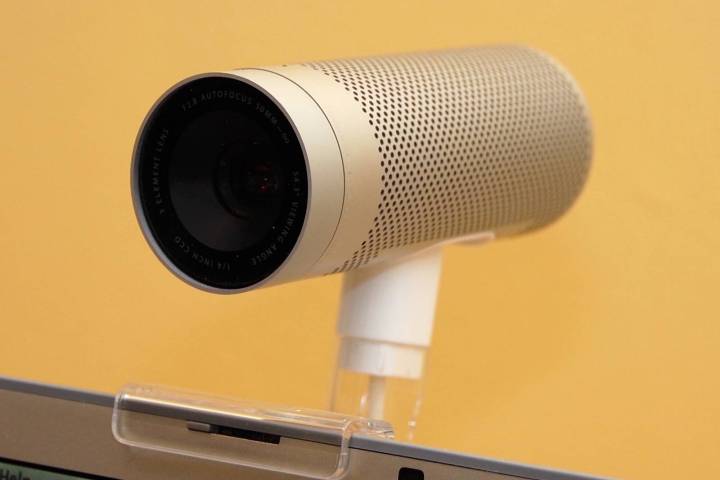
Today marks 15 years since Apple killed its iSight webcam. It was, in my humble opinion, one of the most beautiful products Apple has ever designed. Even among such illustrious company as the iPhone and the MacBook, this little webcam stood out.
Not long after the iSight was launched in 2003, Apple started building webcams into its Macs, which effectively sounded the death knell for iSight so soon after its introduction. Yet look around today, and there’s nothing remotely as well-designed in the webcam world. It was a product of its time — and I know it’s never coming back — but that doesn’t mean we shouldn’t mourn its demise.
The iSight webcam is iconic among Apple fans, and it’s clear to see why. It blended a simple form factor with a sleek, industrial-like aesthetic. Its perforated metal body and cylindrical shape made it seem simultaneously unpretentious and futuristic, like a much-loved tool of advanced robots manning a high-tech orbital satellite. It was a space-age device with a touch of the otherworldly.
Apple’s iconic designer Jony Ive may not have been wheeled out to narrate its introduction, but it’s hard to think of a device more deserving of a showy sizzle reel accompanied by the buttery smooth tones of Apple’s design kingpin.
Compared to modern webcams, there’s no competition, at least aesthetically speaking. Today, even the best webcams are an ugly bunch, with dangling privacy covers, cheap plastic shells, and awkward angles everywhere you look. They’re an afterthought for anyone who makes them. For Apple, iSight was the main event.
Nothing better

Now comes the part where I make a shameful admission: I never got to use an iSight webcam. I know, I know. It was killed off long before I got my first Mac, and by modern standards, it can’t keep up with the picture you get on third-party video shooters.
All this time I’ve been quietly admiring it from afar and wishing for a return to a more enlightened design era. Yet Apple’s mixed bag of recent products — a crummy butterfly keyboard here, a gorgeous Apple Watch there — hasn’t got my hopes up.
Sure, I could look elsewhere. Some other companies have been inspired by iSight, with Dell putting out a suspiciously similar webcam a couple of years back. Yet even when rivals copy iSight, they can’t get it right. Dell’s UltraSharp 4K webcam looks just like a cheap knock-off, with none of the visual flair and panache of Apple’s iconic camera. Even 15 years after its death, no one has been able to match iSight’s looks.
The age of Continuity Camera

For all my longing for a return, I know iSight is never coming back. For one thing, Continuity Camera has simply made it impossible. There’s no way Apple is going to restore a standalone webcam (no matter how beautiful it is) when Continuity Camera’s integrated alternative makes much more sense.
In case you missed it, Continuity Camera lets you mount an iPhone on your monitor and use it as a webcam. It’s simple, straightforward, and doesn’t require you to shell out on a separate device. Not only do you get top-quality iPhone lenses for your calls, but you even have a choice of lenses (depending on your iPhone model). It’s a great option, and Apple isn’t going to ditch it to bring back iSight.
Yet Continuity Camera isn’t perfect, and it demonstrates why standalone webcams are still being made today. For one thing, you can’t use your iPhone for anything else during a call. For another, it’s easy to bump off your screen, and you need a sturdy stand to mount it on in the first place. At the end of the day, though, Continuity Camera does the job well enough that there’s no need for Apple to restore iSight.
That leaves me wistfully longing for iSight, a device I know will never return. It’s up there in the pantheon of classic Apple products that were beautifully overengineered and proud of it, alongside the Power Mac G4 Cube and the iMac G4. Maybe one day Apple will produce something as drool-worthy as the iSight camera. If it does, don’t expect it to be a webcam.



